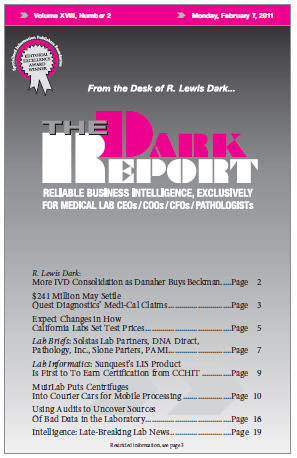CEO SUMMARY: To improve the quality of lab services it provides to more than 300 skilled nursing facilities (SNF) while reducing costs, MuirLab of Concord, California, has created a “mobile specimen processing” solution. It operates a fleet of courier cars with centrifuges and refrigerated storage. Now specimens transported by these cars arrive at the core …
Putting Centrifuges Into Courier Cars For Mobile Processing Read More »
To access this post, you must purchase The Dark Report.


